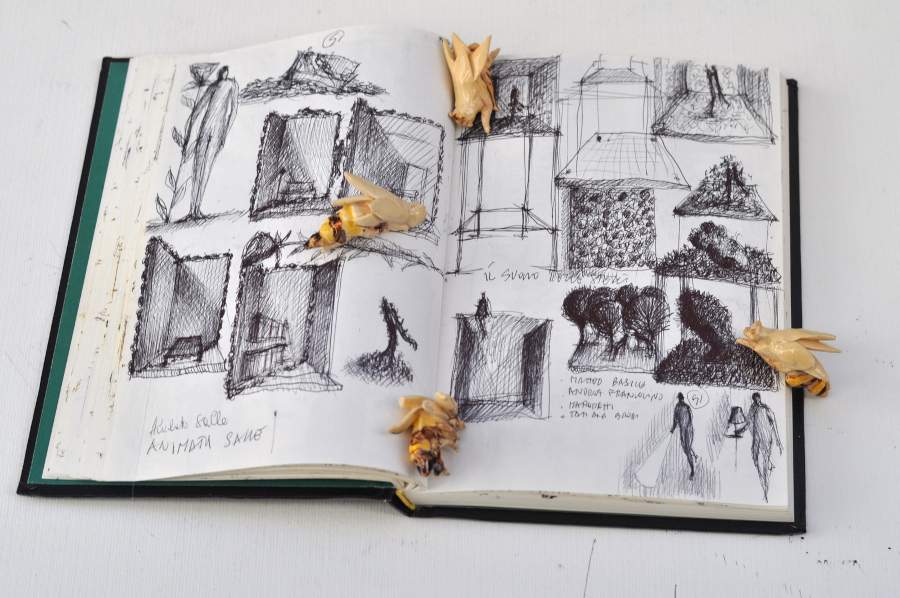As part of the exhibition Ultraromanticism. The Posthuman, Between Restlessness and Abandonment, a six-act collective promoted by the municipalities of Castelnuovo Rangone, Pavullo nel Frignano, Castelfranco Emilia, Savignano sul Panaro, Spilamberto and Vignola, in collaboration with theCultural Association Ricognizioni sull’arte, a selection of artist’s books, made especially for the occasion, is on display.
The Contemporary Art Gallery of Palazzo Ducale in Pavullo nel Frignano is hosting books by Valentina Biasetti, Silvia Inselvini and Marika Ricchi until January 9, 2022. On the other hand, works in book form by Andrea Capucci, Andrea Chiesi, Elisa Florian, Michelangelo Galliani and Simone Pellegrini can be seen until Jan. 16, 2022 at the Rocca di Vignola (access by reservation: https://www.fondazionedivignola.it/rocca-di-vignola/prenota-la-tua-visita/ - rooms granted free use by the Fondazione di Vignola), and finally, Jessica Ferro’s work was presented at Spazio CRAC in Castelnuovo Rangone.
“Proximal to visual art,” explain Sergio Bianchi, Alessandro Mescoli, Massimiliano Piccinini, Federica Sala, Laura Solieri and Andrea Barillaro, independent curators under the Cultural Association Ricognizioni sull’arte, “where it often appears passivated in the form of a tome (vanitas) or zibaldone (for example in Romantic painting), the artist’s book (or the opera book) represents one of the objects of desire for contemporary art collectors. Precisely because of its refined and eclectic characteristics, it imposes itself as the elective medium on which contemporary artists try their hand at experimentation and laterality, creating veritable works capable of synthesizing, in a single object, cultural debate, manifestations of poetics and aesthetic canons, reaching such high levels that it dares to contend for primacy and authority with canvases and sculptures. Popular in the 1970s thanks to the impetus given by the neo-avant-gardes (but now more relevant than ever), the book work is difficult to define. It is a trend, but at the same time an operant object, a romantic and sensitive receptacle, which may have the form of a book or collect only its intentions, but always testifies, deposits and tells, the author’s own research: sometimes as a definitive and terminal landing place, sometimes as an initial approach to the birth of a new work. Often produced in very limited numbered and signed series, or unique works where the artist intervenes directly, the object books not only speak to us of vulnerability and seduction, but also bring the contemporary back to the dimension of man: through the gestural act of leafing through the pages, they delude us, reassuring us, of a newfound preferential knowledge.”
Image: Andrea Capucci, Ceramic notebook and bees (2021; 20 x 30 cm)
 |
| Artist's books in a group show spread across the Modena area on Ultraromanticism |
Warning: the translation into English of the original Italian article was created using automatic tools. We undertake to review all articles, but we do not guarantee the total absence of inaccuracies in the translation due to the program. You can find the original by clicking on the ITA button. If you find any mistake,please contact us.